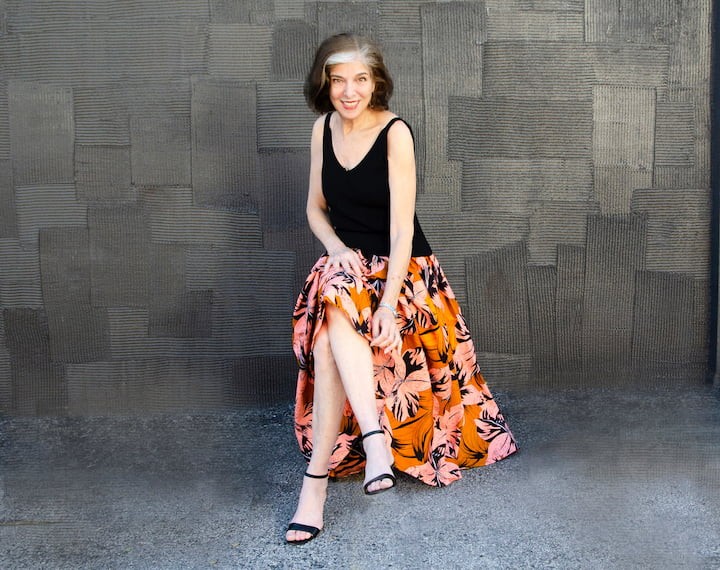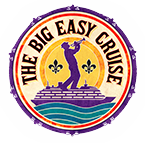Marcia Ball Talks Big Easy

For an artist like Marcia Ball, who has spent fifty of her seventy-five years on the road, January 2025 will be a rare treat: one week on the BIG EASY CRUISE followed right away by another week on our sister SANDY BEACHES CRUISE.
“I guess I’ll have to get off-board for a few hours so they can clean my room,” she says. “But several people have come up and told me that they’ll be on both cruises, so I’m sure we’ll find somewhere to hang out.”
So yes, fifty years, and, as Marcia tells us here, she never gave any other career a second thought. If you look for her in the Hot 100 chart books, you won't find her there. If you look for her in a club near you, keeping timeless American music very much alive, that’s where she’ll be.
And although Marcia has been a resident of Austin, Texas, for more than fifty years, her Southern Louisiana roots run deep. She grew up in Vinton, Louisiana, a small town not far from her birthplace in Orange, Texas.
Bobby Kimball of Toto and R&B star Gatemouth Brown also grew up in Vinton. Did you meet either of them?
BALL: Bobby was a year older. I’ve known him all my life. Bobby went out to Los Angeles, tried to get something going, struck out, came back to college, and went back to Los Angeles before he finally made it. Gatemouth had left town long before I remember, but I met him years later on the festival circuit. I was born in Orange and moved to Vinton. He was born in Vinton and moved to Orange. He died back in Orange after his house in New Orleans was destroyed during Katrina. We became really good friends. Hit me hard when he died.
These days, we think of Southern Louisiana in the Fifties and Sixties as a special place and time. Were you aware of that, or were you just itching to get to New York or Los Angeles, where the action was supposed to be?
BALL: I think I knew it was special. Across from our old home, there was a Catholic hall. There’d be music and dances. A band called the Boogie Kings played pretty often. I saw them when they brought Johnny and Edgar Winter with them. The Winters were just teenagers then. We’d see Cajun bands like the Hackberry Ramblers. There was a lot of R&B and soul and Cajun music on the radio. Zydeco hadn’t really come up then, although Clifton Chenier was around. I knew all that was pretty special.
What was your favorite record when you were growing up.
BALL: James Brown’s Live at the Apollo.
Good choice. You also spent some time in and out of New Orleans when you were a kid, right?
BALL: My mom’s mother lived in New Orleans. We went there every holiday. I remember sitting on my daddy’s shoulders watching the Mardi Gras parade when I was five years old. Catching the beads, back when they were made of glass.
So, how did you get to Austin?
BALL: I was at Louisiana State University in the late Sixties. I was in a psych band called Gum, and they broke up. One guy went to Austin and one to San Francisco. I’d gotten married when I was twenty, and we decided we were going to move to San Francisco, but our car needed repairs in Austin, so we stayed. It was far enough, but not too far. The Austin scene hadn’t really started, but the Vaughans were there, Angela Strehli, Lou Ann Barton, Doug Sahm, and so on. The Armadillo was already going and Antones’s started in 1975. It came together pretty fast.
How often do you get to New Orleans?
BALL: As often as I can. Me and a bunch of girlfriends (meaning we’re all in our seventies) go down. Last time, we saw my hero, Irma Thomas, at St. Louis Cathedral. She was wonderful. She always is.
Where do you like to eat?
BALL: Oh, so many places. When my girlfriends and I went down, we ate at Dooky Chase’s. So much history there. Every plate they set in front of us, we’d say it was the best ever. We also love the Audubon Clubhouse run by Dickie Brennan of the famous Brennan restaurant family.
Anders Osborne said that was his favorite place!
Anders lives there, so he knows what he’s talking about.
Anders will be on the Big Easy Cruise together with a bunch of other artists you surely know well.
BALL: Oh yeah. One time, I got on a streetcar in New Orleans, and a voice behind me said, “Hey, Marsh...” It was Keb Mo. We got to know each other. I’ve known Tab Benoit forever. I first saw Jon Cleary at Fitzgerald’s in Houston. He was playing solo, opening for me. This was the late Eighties. He played songs by Professor Longhair, James Booker, and all the New Orleans piano greats. Then I heard him speak in this broad British accent. Blew my mind.
Do you embrace happy accidents that happen on-board a cruise, like sitting in?
BALL: For sure. The Big Easy Cruise will get like the Sandy Beaches Cruise in that regard. One time on Sandy Beaches, we had SEVENTEEN keyboard players on one stage. Another time, we did the “Crazy” medley: Ray Price’s “Crazy Arms,” Spade Cooley’s “Crazy ‘Cause I Love You,” Willie Nelson’s “Crazy,” and James Brown’s “I’ll Go Crazy.” You had to be there for that.
This has been your fiftieth year as a solo performer. Was there ever a fallback position, like going into the family business?
BALL: This is all I’ve ever done or wanted to do. I’ve been really lucky every step of the way. Every band that has broken up has led me to the next band. It has been that kind of life.
We’re looking forward to seeing you.
BALL: Come to my shows. Come say hi. I’m really looking forward to playing for everyone and meeting old friends on-stage and in the breakfast line. I’m not gonna hide!
- Colin Escott © 2024
Born in England, Colin wrote the definitive biography of Hank Williams, subsequently adapted into a movie starring Tom Hiddleston. He also wrote Good Rockin’ Tonight—Sun Records and the Birth of Rock ‘n’ Roll. His work has appeared in many magazines, and he has won two Grammys for historical sets. He also cowrote the hit Broadway show Million Dollar Quartet.
Let the Good Times Roll at Sea!
